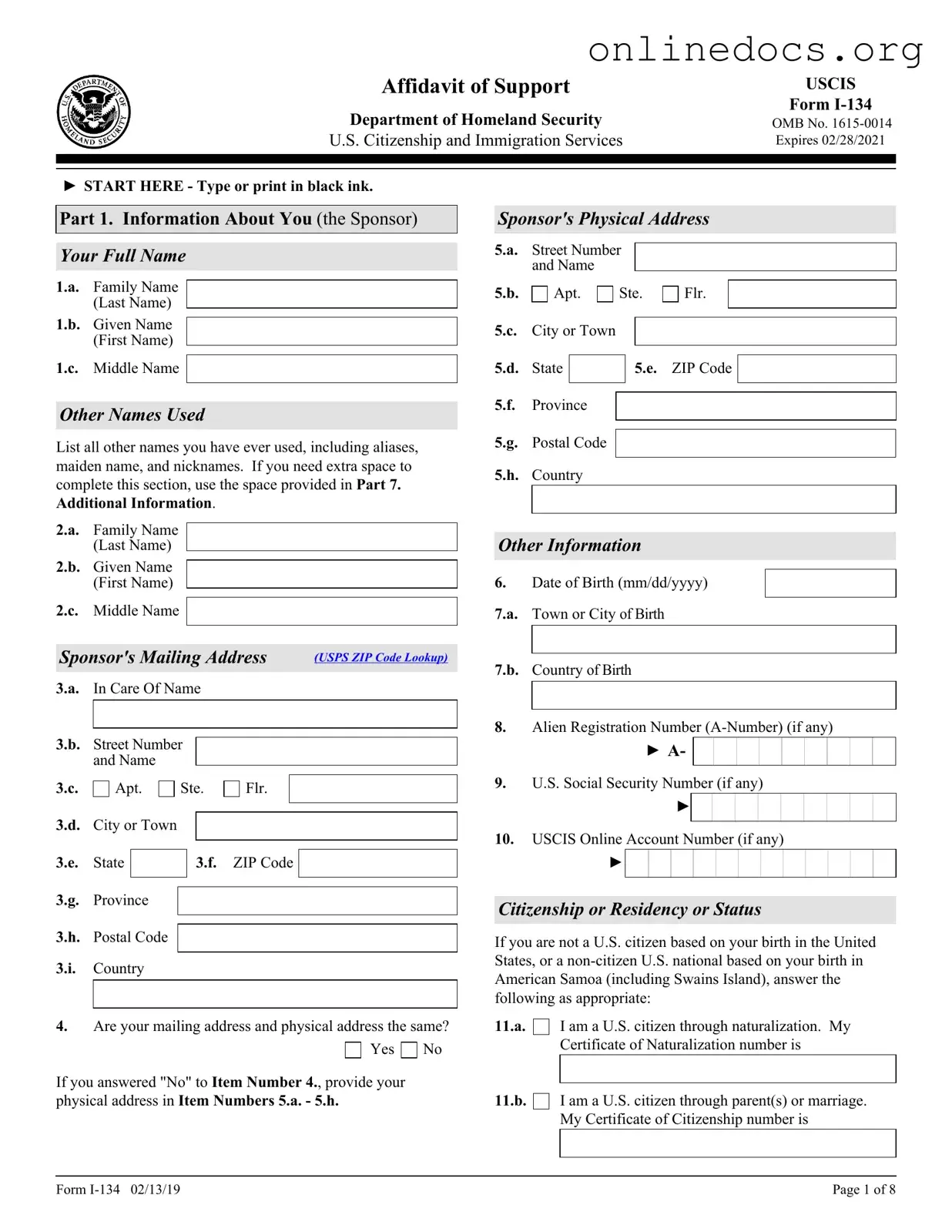The USCIS I-134 form, also known as the Affidavit of Support, is similar to the I-864 form, which is another affidavit of support used in the immigration process. While the I-134 is typically used for non-immigrant visa applicants, the I-864 is required for immigrant visa applicants. Both forms serve to demonstrate that the sponsor has the financial means to support the applicant, ensuring that the applicant will not become a public charge. The I-864 has more stringent requirements regarding income and assets, reflecting its role in the permanent residency process.
Another document that shares similarities with the I-134 is the Form I-130, Petition for Alien Relative. While the I-134 focuses on financial support, the I-130 is used to establish a qualifying relationship between a U.S. citizen or lawful permanent resident and their foreign relative. Both forms are essential in the immigration process, as they help facilitate the entry of family members into the United States. The I-130 lays the groundwork for the immigration process, while the I-134 ensures that the applicant will have adequate financial backing upon arrival.
To ensure the successful establishment of your business, it's vital to have a well-structured plan. A thorough understanding of your operational guidelines can be supported by drafting an essential Operating Agreement for your LLC. For more information on this crucial document, please visit the guide for creating an Operating Agreement.
The I-751 form, Petition to Remove Conditions on Residence, also bears some resemblance to the I-134. This form is used by conditional residents who obtained their status through marriage and need to prove the legitimacy of their relationship after two years. While the I-134 focuses on financial support, both forms require documentation that demonstrates the sponsor's commitment to supporting the applicant. The I-751 emphasizes the relationship aspect, whereas the I-134 centers on financial stability.
In addition, the Form I-864W, Intending Immigrant’s Affidavit of Support Exemption, is another document with parallels to the I-134. This form is utilized by certain applicants who are exempt from the I-864 requirement, such as those who are self-petitioning under the Violence Against Women Act (VAWA). Both forms aim to ensure that applicants have adequate support, but the I-864W specifically addresses unique situations where the standard affidavit of support is not applicable, highlighting the flexibility within the immigration process.
Lastly, the DS-260, Immigrant Visa Electronic Application, is akin to the I-134 in that it is part of the broader immigration process. The DS-260 is completed by individuals applying for an immigrant visa and includes questions about the applicant's background, health, and financial situation. While the I-134 is focused on the financial commitment of the sponsor, the DS-260 collects comprehensive information about the applicant's eligibility for immigration. Both documents play crucial roles in ensuring that applicants meet the necessary criteria for entry into the United States.
